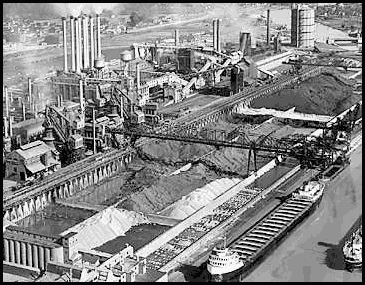
Power Supplies
We begin our tour of the Vacuum Tube Supercomputer Centre at the same place the electrons begin their trip through our hundreds of miles of wiring -- the power supply.

Our coal-fed boilers power some of the largest turbogenerators ever built by Westinghouse... six of them. One at a time is taken out of service for maintenance, while the other five wait on hot-standby in a rotating demand arrangement controlled from the Bus Building. There, an automated center continuously monitors demand from the other modules, and in particular the Central Processing Unit. The powerhouse can become quite an exciting place when someone runs a large batch job in vector Fortran!
The large crane at center offloads coal from the ships at the right, moving it by the kiloton to the various bins, where it can be conveyed to the ever-hungry boilers. The heavy smoke issuing from all stacks in this photo most likely indicates a loop executing up in the CPU.
Typical Filament Room
VTSC achieves reasonable performance using vacuum tubes by substituting very massively parallel architecture for raw clock speed. Our breakthrough control and vectorization routines raise effective throughput to the gigaFLOP range, which one will agree is very respectable for tube gear.
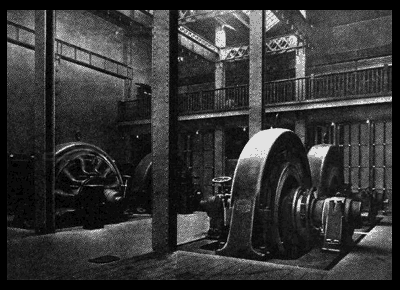
Parallelism and redundancy require a lot of tubes, with a lot of filaments energized by pure DC generated nearby in hundreds of rooms like this one. Here, motor-generator sets convert the powerhouse's high-voltage AC to high-current DC, adding up to many millions of amperes throughout the complex as a whole. VTSC could easily run the entire New York subway on its busiest day, with enough reserve left over for the Christmas trees in Rockefeller Center.
Random Access Memory
VTSC offers up to 512 gigabytes of fully addressable RAM. Smaller structures alongside the main RAM Building house processor cache, stack, heap, buffers, and various work areas used for highly proprietary purposes by the BIOS Building.
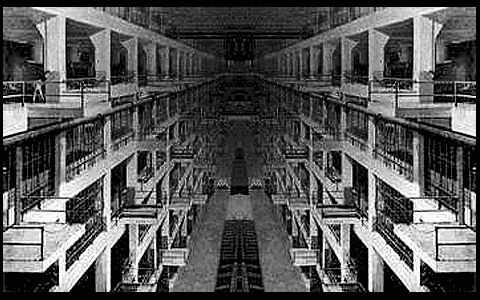
RAM architecture is completely open, and expandable if more acreage can be found. Each module in the RAM Building has railroad access across its entire length, with a large, industrial crane to quickly lift replacement modules or crates of fresh tubes to any part of the facility within minutes.
Parity checking instantly finds bad tubes, which are constantly being replaced by a highly trained staff of 500 per shift, 200 on the Page Zero Floor alone. This staff can be increased to 1000 if a motion picture is being rendered at VTSC. When the appropriate password is given at the Network Interface Building, a steam whistle blows at the powerhouse, and personnel drop other jobs and bicycle over to the RAM. The thousands of discarded used tubes are taken in boxcars to a recycling facility nearby, where they are reduced to glass, metal, and at least 50 other by-products. These are sold to maquiladora factories in Mexico.
Brains of the Beast: The CPU
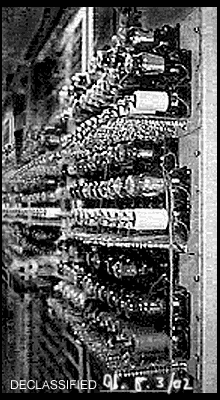
VTSC's state of the art processing building contains the highly proprietary circuitry that makes our reputation for reliable, 24/7/52, vector supercomputing. Many hundreds of miles of higgs-boson quantum tunnels replace copper wiring, moving information through the building's acres of chassis and racks with non-Einstein, un-relativistic, instantaneous propagation. This eliminates the sluggishness that has plagued vacuum tube mainframes in the past, and allows the Negative Resistance Oscillator Room to run the building at a clock speed which, while not spectacular in the supercomputing industry, is unheard of in large systems using tubes.
Much of the CPU Building has been classified top secret by the NSA Computing Department, and thus cannot be shown to the public. However, one of the nice things about vacuum tube computers is that close-up photographs do not often reveal much about the overall design of the systems. Therefore, this detail of a typical rack in the Arithmetic Logic Division has been cleared for public examination.
Network Operation Center
The NOC ("knock"), on the top floor of the Network Interface Building, was recently remodeled to make it brighter and more conducive to employee productivity. We'd like to show it off to everyone, but high voltages and frenetic activity make our NOC off-limits to all but the VIP walking tours.
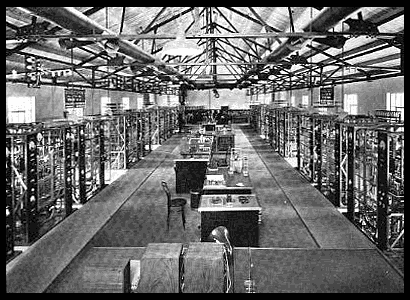
Network administrators take your voice calls at the desks in the center. Racks contain the many vacuum-tube modems and terminal units needed to communicate with (and bill!) other computers which have ordered supercomputing. This picture, taken right after the refurbishment completed, was the last time the NOC was ever this peaceful!
User's Room
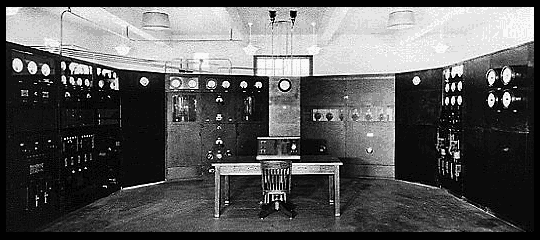
As with all supercomputers, VTSC is not very interactive, and works mostly in batch mode with other machines. However, the few people who must come to the facility can take advantage of our brand new User's Room, with all the latest features of vacuum-tube supercomputing. For example, part of the secondary cooling loop from the CPU Building has recently been rerouted through the Central Coffee Plant, making pressurized hot coffee always available to this room and others, while also helping cool the CPU. It's just another way we're innovating every day at The Vacuum Tube Supercomputer Centre!
Take the Walking Tour
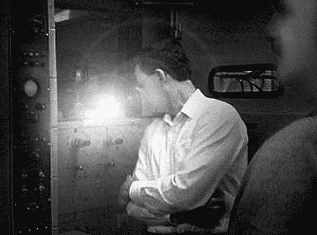
VTSC walking tours are given on the second Tuesday of every month at 11:30 AM local time. Call ahead for reservations. Wear comfortable hiking shoes. Many of our guests find that bottled water and trail food are also helpful.
VTSC Ministry of Public Affairs, 2002